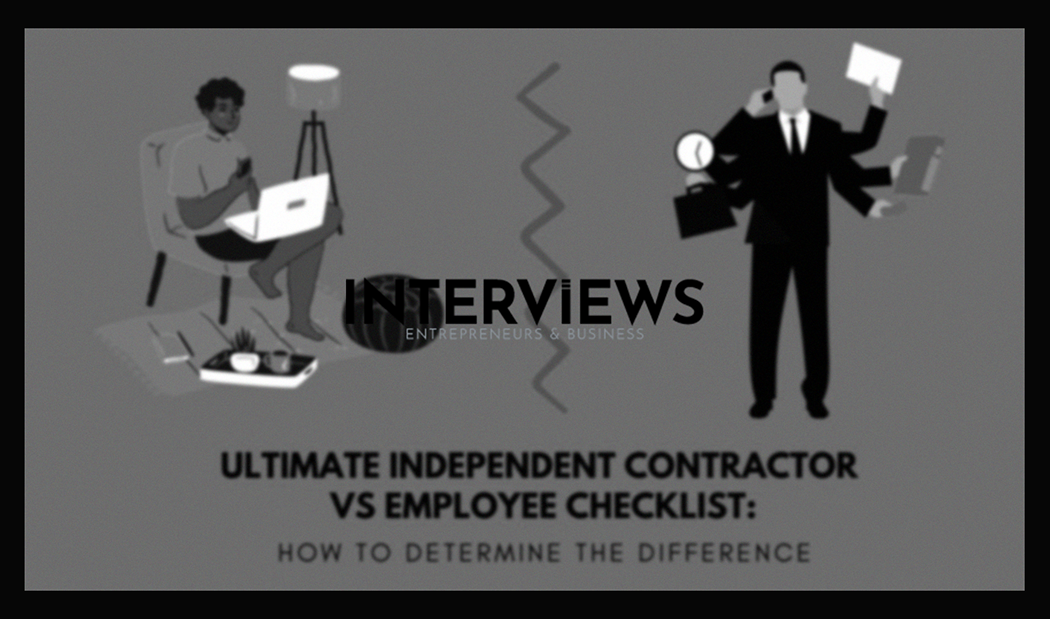Decoding the Worker Puzzle: Employee vs. Independent Contractor – What’s the Real Deal?
Figuring out your work status can feel tough. Are you an employee or an independent contractor? It’s not just a job title. Legal definitions and tax issues play a role. Employees often enjoy the perks. Let’s dig into this classification puzzle.
I. Employee vs. Independent Contractor: The Nitty-Gritty
What distinguishes these roles? It comes down to control, relationships, and compensation.
- Control is King (or Queen):
- Employees: You aren’t fully in control. Your boss guides you, and you follow their directions. Employees work for wages and often receive benefits.
- Independent Contractors: You are in charge. You set your hours, choose your projects, and run your own show.
- Relationship Status: It’s Complicated:
- Employees: This is a long-term relationship, often rewarding, similar to how you rely on coffee.
- Independent Contractors: Think of it as short-term. You work on specific tasks and move on after completing them.
- Show Me the Money (and Benefits):
- Employees: Steady paychecks come in. Stability is key, with benefits like health insurance, retirement plans, and paid time off.
- Independent Contractors: You set your pay. But you cover your own benefits and additional costs.
- Tax Tango: Who Pays Whom?
- Employees: Your employer withholds taxes from your wages. They pay their share of taxes as well.
- Independent Contractors: You handle your taxes. There’s no withholding. Be prepared for tax season.
- Legal Armor: Who’s Got Your Back?
- Employees: You enjoy legal protections. Laws protect minimum wage, overtime, and discrimination rights.
- Independent Contractors: Limited protections apply. You depend on contracts and general laws.
II. Employer’s Corner: The Financial Weigh-In
Firms must carefully choose between hiring employees and contractors. Let’s examine the financial implications.
- Contractor Cost Savings: The Myth of the Unicorn?
- Contractors seem cheaper at first. The fewer benefits employers pay looks appealing.
- But, lack of benefits adds up. Outsourcing work can appear cheaper at times.
- Contractor Hourly Rates: Prepare for Sticker Shock.
- Contractors charge more per hour. They aren’t getting benefits, so they price accordingly.
- Expect 50% to 70% more than what you’d pay an employee.
- Upfront Employee Costs: Buckle Up.
- Salaries and benefits for employees require significant investment. Contractors need less commitment upfront.
- Misclassification Mayhem: Oops, You Stepped in It.
- Classifying an employee as a contractor can lead to severe penalties. The costs can accumulate quickly.
- The taxman will want his share. Be prepared for repayments.
III. Worker’s World: Money Matters for You
If you’re looking into the 1099 lifestyle, let’s discuss financial realities.
- Tax Time Tango: It’s All You, Baby.
- You’re responsible for taxes as a 1099 contractor. Self-employment and income taxes are your responsibility.
- No taxes are withheld. This becomes an issue on tax day.
- You’ll need insurance too, like health and liability. Protect yourself as your business.
- Set aside 25%-30% of income to cover taxes. Better safe than surprised.
- Benefit Blues (or Bliss):
- You lose those employee benefits when contracting. Freedom comes at a cost.
- Deduction Delight: Silver Linings Playbook.
- You’ll face more self-employment taxes. But there’s a silver lining – business deductions.
- Your home office, supplies, and software can reduce taxable income. Use Schedule C for reporting.
- Earning Potential: Sky’s the Limit (Maybe).
- Freelancers can earn more than employees in certain cases. They often charge higher rates.
- Your hourly rate should encompass all expenses, including benefits and taxes.
- Cash is King? Maybe Not Always.
- Contractors may prefer cash for convenience or tax purposes. Be cautious; cash can signal issues with transparency.
- Digital payments provide safer methods of transaction and better records.
IV. Legal Lasso: Taming the Compliance Beast
Worker classification is more than money; it’s a legal challenge. Avoid misclassification traps.
- Worker Classification Tests: The Litmus Test.
- New rules alert! The Department of Labor is getting strict. Economic dependence shows if you’re an employee or contractor.
- This analysis looks at various factors, such as control and the nature of work relationships.
- California’s rules focus on the control and results of work. The true business is critical too.
- The goal is independence in true terms without micromanagement.
- DOL’s Final Say: The New Sheriff in Town.
- The DOL’s emphasis is on economic dependence. If you rely on an employer financially, you’re likely marked as an employee.
- 1099 Rights: Freedom Perks.
- Contractors enjoy more freedom compared to W-2 employees. Set your hours and work on multiple projects.
- New Federal Rules: Game Changer Alert!
- New rules come into effect on March 11, 2024! They employ a six-factor test focusing on your real business setup.
- Misclassification Consequences: Deja Vu of Pain.
- Watch out! Misclassification comes with financial consequences. Back wages and penalties loom.
- The tax man awaits for unpaid liabilities. Don’t forget deadlines for filing forms.
- Termination Tango: It’s Not Always Two Weeks and Roses.
- The contract controls if notice is required. Generally, contractors can be terminated without warning.
- Two Weeks’ Notice? More of a “Good Idea,” Not a Law.
- Your relationship with employers isn’t bound to provide two weeks’ notice. Review contracts for termination details, as they provide needed context.
V. Paperwork Parade: Forms and Filings
Paperwork matters in worker classification. Ensure forms are completed correctly or expect IRS inquiries.
- Form W-9: The Contractor Onboarding VIP.
- The initial form for 1099 contractors is the IRS Form W-9. This helps businesses gather essential information.
-
- Contractor details for tax filings include name, address, and tax ID number. These are the essentials.
- Form 1099-MISC (or NEC Now!): The Payment Tracker.
- If you pay a contractor $600 or more in a year, you need Form 1099-NEC. This applies unless they are a corporation. Corporations often receive a 1099 pass.
VI. Scenario Shenanigans: Real-World Riddles
Here are some common scenarios. Real life often is not black and white.
- Ex-Employee Encore as Contractor: Possible?
- Yes, you can hire former employees. But the relationship must truly fit the contractor model. No funny business!
- For example, hire a former employee to train new staff. They can tackle a project independently. The key is “independently.”
- When to Call in the Pros: Know Your Limits.
- If the work is dangerous or complicated, call a professional contractor. DIY may not be worth the risk or the headache.
- Double Duty: Employee and Contractor? Is That Legal?
- Yes, you can be both! A W-2 employee and a 1099 contractor in different roles. The IRS allows this.
- Life happens: layoffs, resignations, career pivots. Make sure each role is classified correctly.
VII. Bonus Round: Extra Nuggets of Wisdom
Here are some factors to consider as you navigate employees and contractors.
- Liability Shield: Contractor Edition.
- Contractors reduce employer liability for their actions. Less direct control often means less responsibility.
- Worker Happiness Factor: Freedom vs. the 9-to-5 Grind.
- Contractors report more happiness than traditional employees. Their flexibility boosts mood. But remember, freedom comes with responsibility.
That’s it. Employee vs. independent contractor is decoded. It isn’t always simple. Understanding key differences, financial implications, legal rules, and paperwork will help. Now classify wisely!





